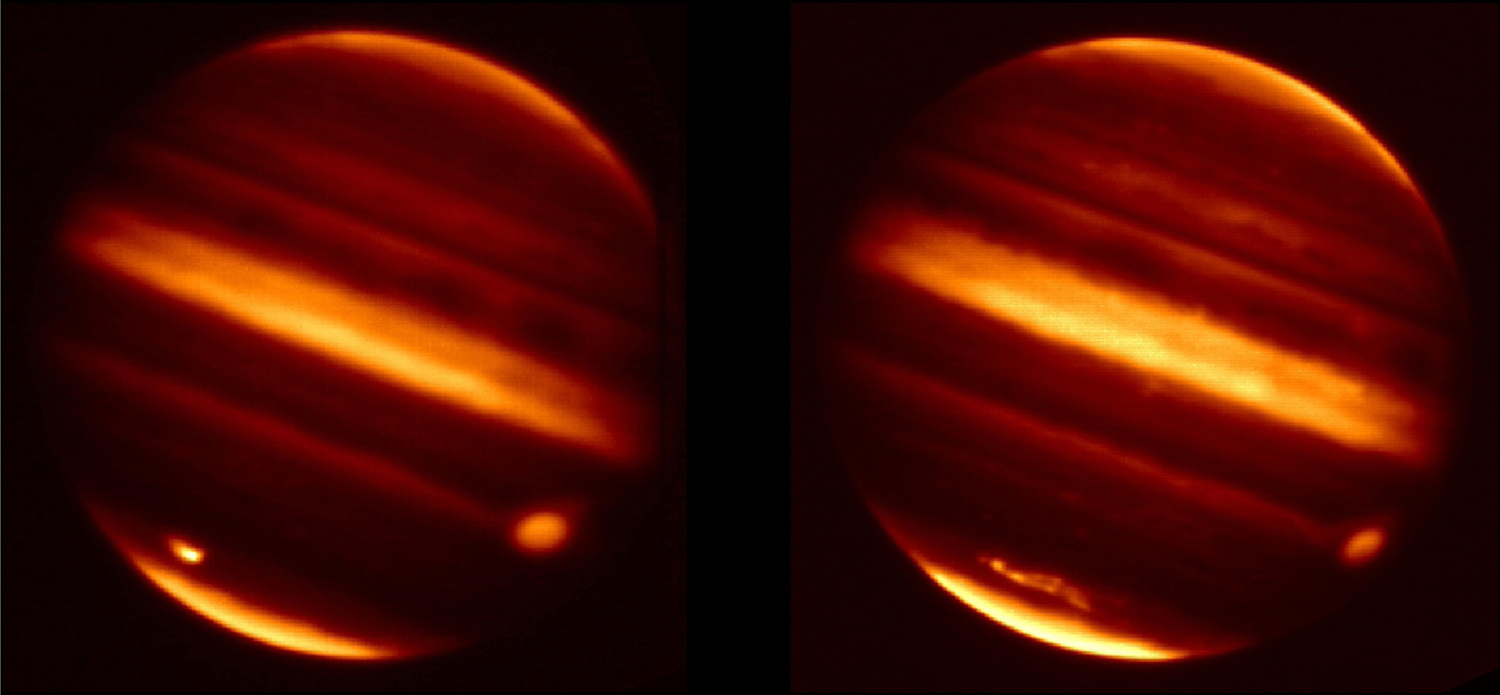Asteroid the Size of the Titanic Rocked Jupiter

The object that plowed into Jupiter in 2009, creating a giant scar, was most likely an asteroid the size of the Titanic, rather than a comet, the latest evidence suggests.
Astronomers, presuming Jupiter had already cleared most of the asteroids out of its gravitational sphere of influence, initially suspected it was a comet that tore through the gas giant's atmosphere and exploded on July 19, 2009. But follow-up research in 2010 began to push the investigation back toward an asteroid strike.
Two newly published studies of the Jupiter impact and its resulting debris cloud have pinned the blame more firmly on an asteroid.
"We weren't expecting to find that an asteroid was the likely culprit in this impact, but we've now learned Jupiter is getting hit by a diversity of objects," said researcher Paul Chodas, of NASA's Jet Propulsion Laboratory in Pasadena, Calif., in a statement released yesterday (Jan. 26).
Studying the impact
The scar caused by the impact was first spotted by an Australian amateur astronomer, Anthony Wesley. A wealth of follow-up observations using ground and space telescopes then followed.
Chodas and other researchers, who reported their findings in two recent papers in the journal Icarus, said they had used several different infrared telescopes to study the scar as it evolved over the first week or so.
Get the Space.com Newsletter
Breaking space news, the latest updates on rocket launches, skywatching events and more!
They determined that the collision had warmed Jupiter's lower stratosphere by 5.4 to 7.2 degrees Fahrenheit (3 to 4 degrees Celsius). That may not sound like much, but it signals a huge deposition of energy, since the warming was spread over such an enormous area, researchers said.
The asteroid had carved a channel of super-heated gas and debris as it streaked through Jupiter's atmosphere.
Then, at some point deep below the clouds, it exploded, releasing energy equivalent to 5 gigatons of TNT, the researchers said — about 250,000 times more energy than was released by the atomic bomb that the United States dropped on Nagasaki, Japan, in 1945 to end World War II.
The massive explosion launched gas and debris back out along the channel, above Jupiter's clouds. This stuff then splashed back down into the atmosphere, warming it substantially and creating aerosol particulates.
The researchers trained their infrared telescopes on the impact site, studying the chemical composition of the stirred-up debris. They found signatures of hydrocarbons, silicas and silicates, but no evidence of carbon monoxide. This unique chemical mix points strongly to an asteroid rather than a comet, they said.
Assuming the impactor had a rocklike density of around 2.5 grams per cubic centimeter, the researchers calculated its diameter to be 660 to 1,650 feet (200 to 500 meters). That would make the asteroid about the size of the ill-fated Titanic ocean liner, NASA officials said. The Titanic was 882 feet long, 92 feet wide at its widest point, and 175 feet tall (269 meters by 28 meters by 53 meters).
Comets not always to blame
Before the July 2009 strike, the last object known to smash into Jupiter was comet Shoemaker-Levy 9 in 1994, researchers said. Amateur astronomers also reported spotting fireballs on Jupiter, possibly from new impacts, in June and August of 2010.
Observations made by NASA's Hubble Space Telescope showed that the debris from the 2009 collision was heavier or denser than that caused by the 1994 impact, researchers said. These results further strengthen the case that different types of objects were to blame.
An asteroid impactor comes as a bit of a surprise. Before the 2009 event, most scientists had thought that the only objects that hit Jupiter were icy comets whose unstable orbits brought them close enough to be sucked in by the giant planet's gravity.
It was thought Jupiter had already cleared most other objects, including asteroids, from its sphere of influence, researchers said. But modeling studies performed by the researchers identified one asteroid whose chaotic orbit could well send it smashing into Jupiter someday, further suggesting that asteroids are viable impactors.
"Both the fact that the impact itself happened at all and the implication that it may well have been an asteroid rather than a comet shows us that the outer solar system is a complex, violent and dynamic place, and that many surprises may be out there waiting for us," said co-author Glenn Orton of JPL. "There is still a lot to sort out in the outer solar system."
Join our Space Forums to keep talking space on the latest missions, night sky and more! And if you have a news tip, correction or comment, let us know at: community@space.com.

Space.com is the premier source of space exploration, innovation and astronomy news, chronicling (and celebrating) humanity's ongoing expansion across the final frontier. Originally founded in 1999, Space.com is, and always has been, the passion of writers and editors who are space fans and also trained journalists. Our current news team consists of Editor-in-Chief Tariq Malik; Editor Hanneke Weitering, Senior Space Writer Mike Wall; Senior Writer Meghan Bartels; Senior Writer Chelsea Gohd, Senior Writer Tereza Pultarova and Staff Writer Alexander Cox, focusing on e-commerce. Senior Producer Steve Spaleta oversees our space videos, with Diana Whitcroft as our Social Media Editor.









